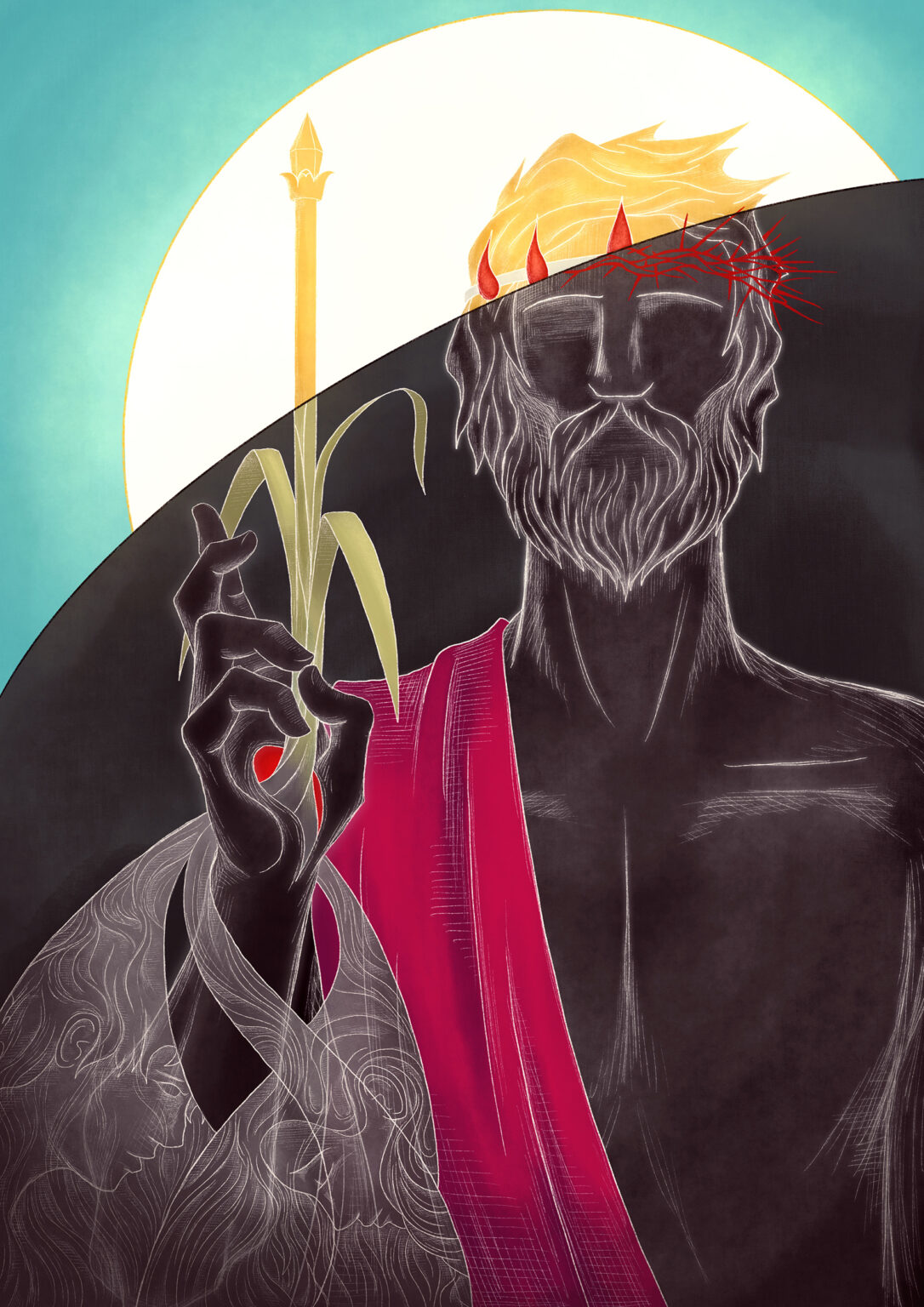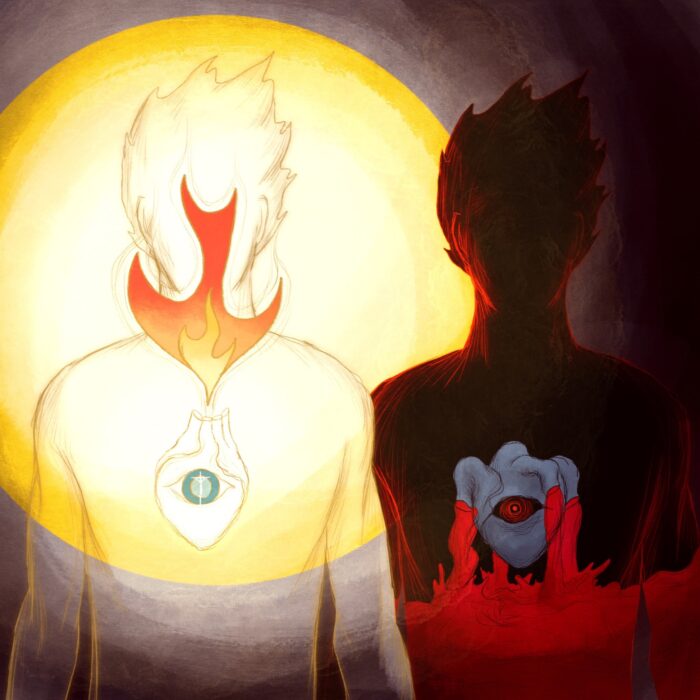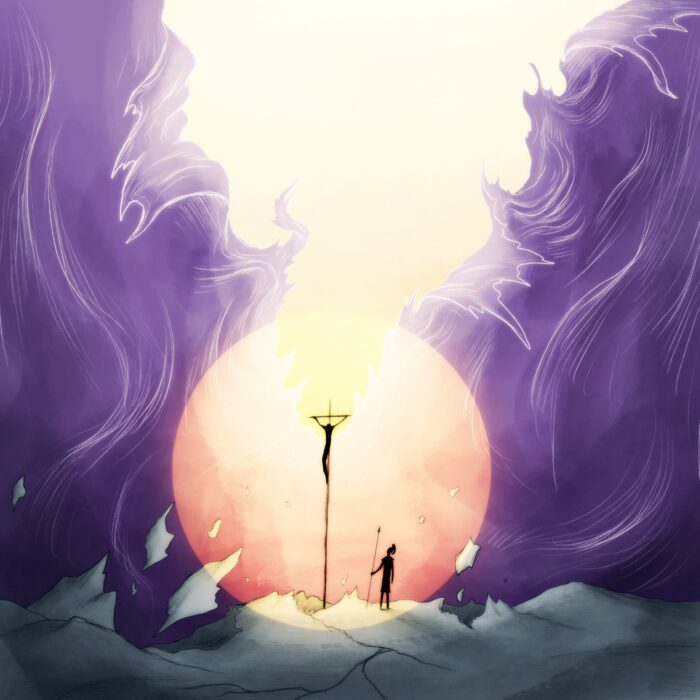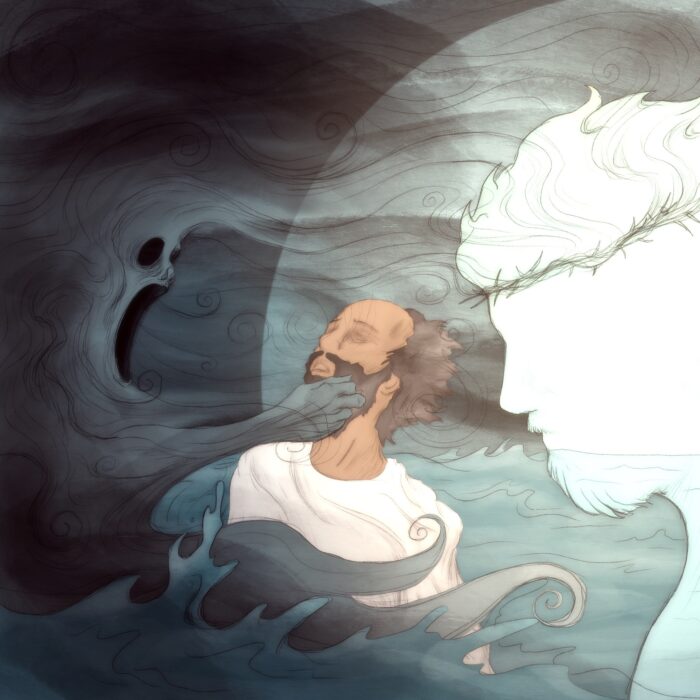In Matthew 27:29, we see the Roman soldiers scoff at the claim that Jesus is the King of the Jews by placing a crown of thorns on his head and putting a reed in his hand as a mock scepter. However, their attempts to malign Christ are, for those with eyes to see, transfigured into a profound affirmation of His true kingship and a revelation of the True King.
The True King who rules in the Name of YHWH is crowned with the curse of His people. Thorns are emblematic of the totality of humanity’s cursed state (Gen.3:18, Is. 55:13, etc.) and when the soldiers weave these images of the curse into a crown and place them on the forehead of the incarnate Son—unbeknownst to them—they are proclaim to all the world that the glory of the True King is the splendor of His sovereign and self-giving love, by which He bears the curse of His people as His own.
Again, the True King who rules in the Name of YHWH reigns with a scepter, not of dominating power, but of compassion and mercy. He is the King who will not break the bruised reed, who will not cast out the broken and needy, who will not disdain the poor and the powerless. Rather, He is the King who descends into the weakness of His people—becoming Himself THE Bruised Reed—so that He might, as the Suffering King, hold the bruised reeds of His people near to Himself, and who—in rising again—raises them up to a place of unbreakable security in Himself.
This is the True King who rules in the Name of—and so reveals the Name of —YHWH. This is the Lord of Lords and King of Kings, the one with all authority in heaven and on earth, the one who rules now from the throne of heaven in the risen beauty of cruciform love. He is the King who wears the curse of His people—overcome by sovereign love—as the crown of His glory, and whose reign is marked by mercy that will not break a bruised reed and compassion that will not snuff out a smoldering wick. As the soldiers said in mockery, we say in truth — “Hail, King of the Jews!”
Picture explained:
This image was suggested to me by Lane, who is one of Full of Eyes’ supporters on Patreon. I loved the connection he made between the “bruised reed” whom Christ does not break and the reed of mocking (and ironically true) kingship placed in His hand. Below is my explanation of how I presented that concept in this image.
In this image, the “bruised reeds” of God’s people are shown being gathered up into the reed in Christ’s hand. Even though Christ held the reed before His crucifixion, I’ve depicted this scepter of earthly weakness springing up from the wound in His hand because it is by His crucifixion that He enters into the brokenness of His people and so is able to hold them near to Himself through suffering into glory. The shape of Christ’s hand as He holds the reed (the traditional form of priestly blessing) indicates that His holding of His people in their weakness through His own weakness is blessing / grace / gift to His people. At the top of the image, you can see the scepter of reeds transfigured into one of gold—this anticipates the glorification of God’s people as rulers on earth alongside—and in union with—Christ.
See also that the crown of thorns is transfigured into a crown of glory. However, the crown of glory bears the five wounds of Christ’s crucifixion as its five jewels. This communicates the idea that Christ’s resurrection does not eclipse or erase the reality of His suffering, rather it transfigures that suffering into glory. The wounds of the crucified Christ—marks of the curse—become, in the body of the risen Christ, the very emblems of His glory and heralds of His love. Thus, in this picture, the crown of Christ seen in the light of the resurrection does not ignore the reality of His suffering under our curse, rather it puts that reality—in the form of the five jewels/wounds—front and center as the supreme revelation of God’s love and—therefore—the supreme revelation of His glory.




